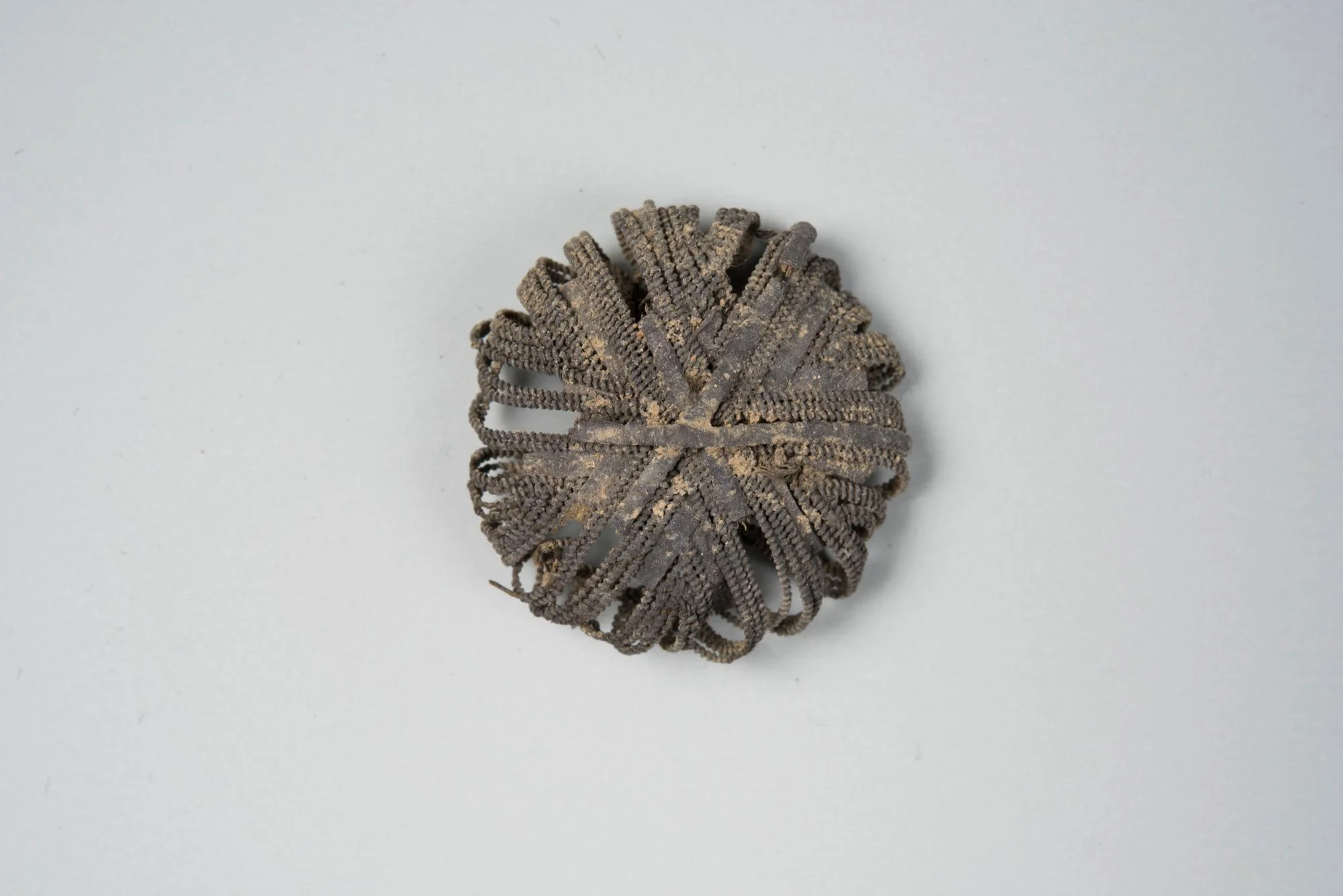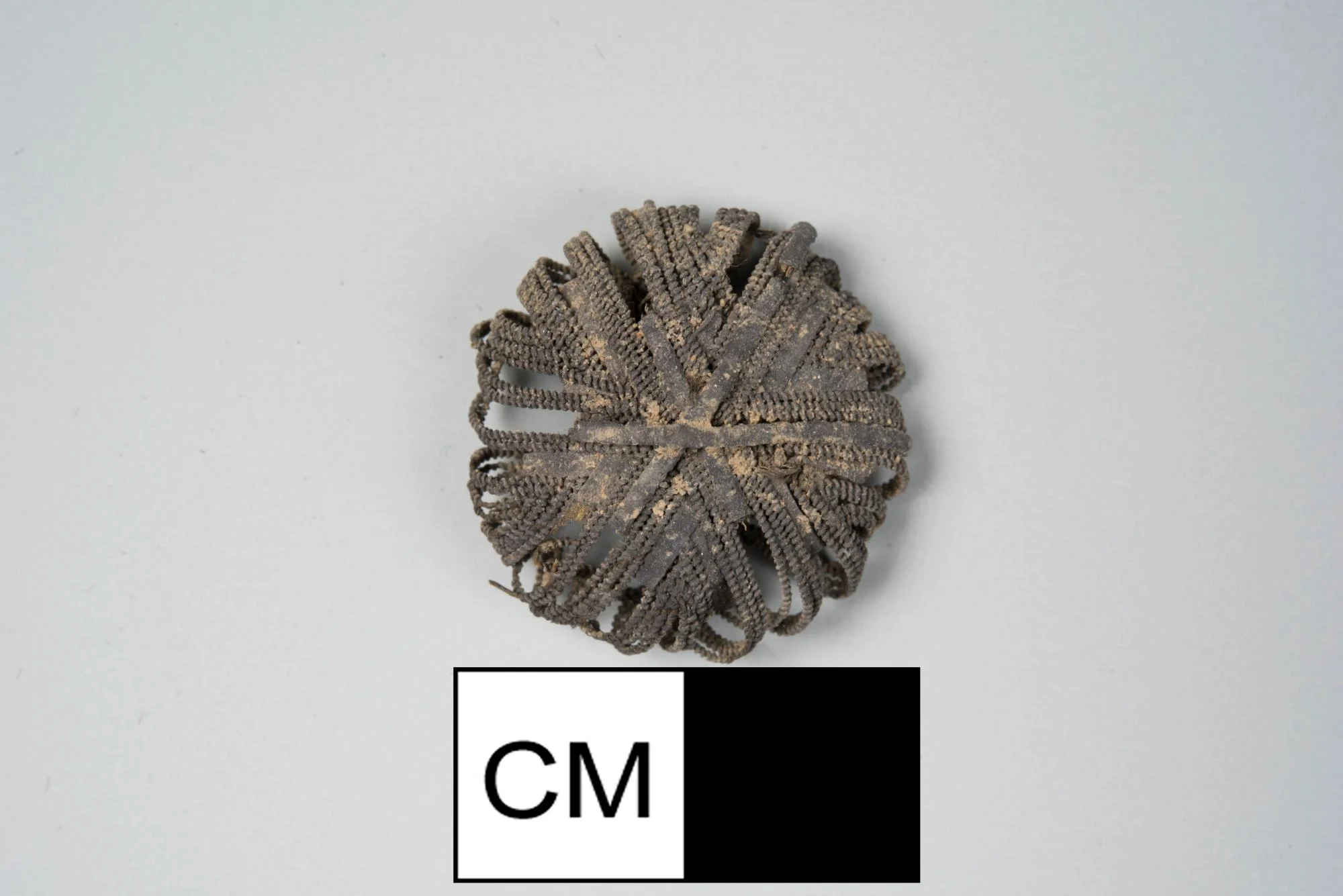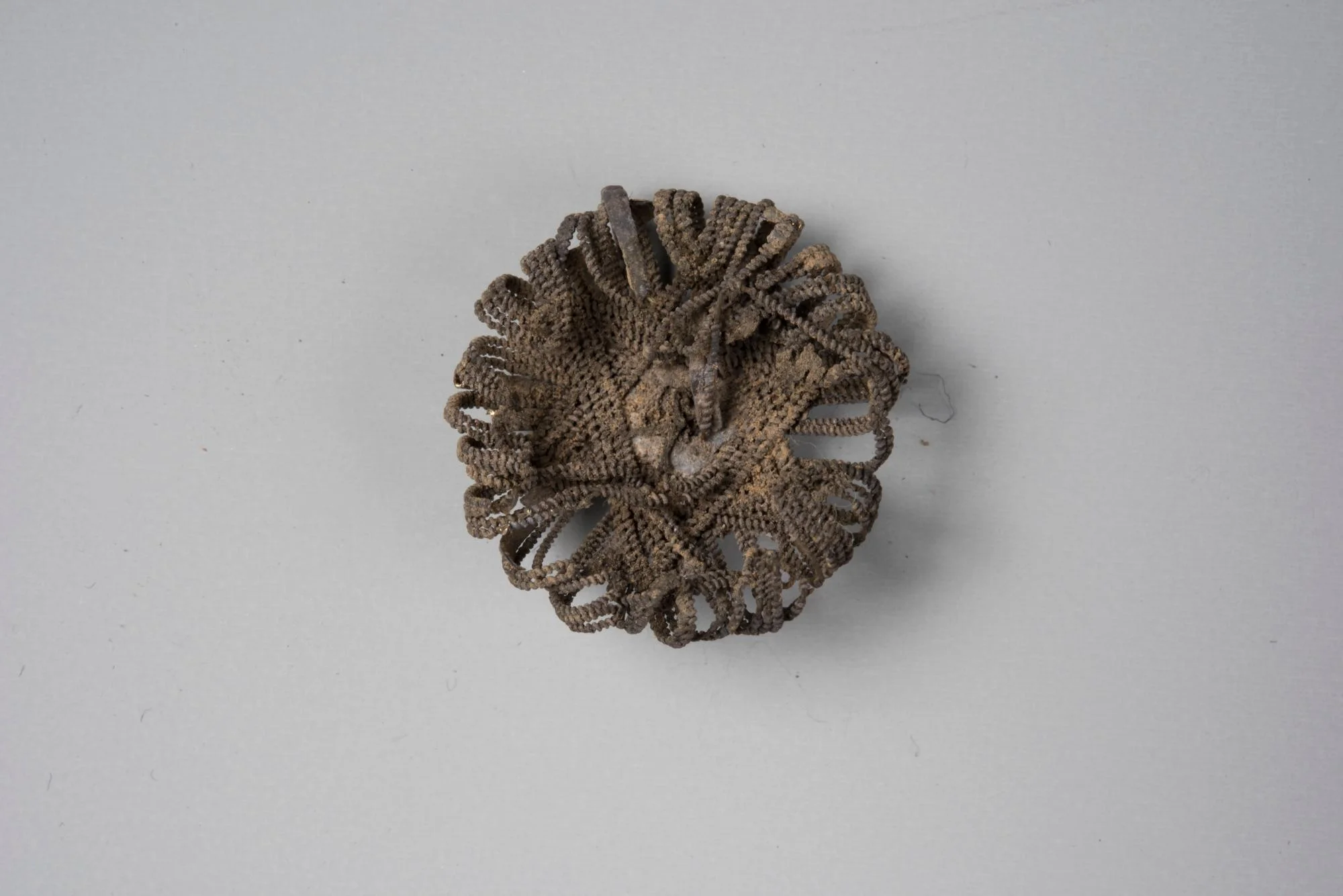Notes
This remarkable artifact is a textile covered button. The star pattern is composed through the careful arrangement of metallic foil strips and metallic coated threads, which have been braided or twisted. The barest hints of the silk core to the threads can be seen in the image, and were preserved due to their silver coating. Originally, this pattern was sewn together over a button mold, likely made of bone or cardboard, and which also would have contained a shank or eyes to attach the button to clothing.
In the eighteenth century, buttons came in a variety of shapes and sizes. Sometimes this variation can be used to identify which articles of clothing a button may have been used in the past. The diameter of this button indicates it was likely for use on a coat.
Object Type
Has it Been Conserved?
No
Where Was It Found?
Project Site: House for Families [more details]
Material
Manufacturing Technology
Form
Shape
Completeness
Decorative Technology
Decorative Notes
Button face is star pattern composed of metallic threads and foils. S-spun thread visible inside loose metallic threads. Z-ply thread visible inside tighter metal threads that make up central 6-point star. Similar to pattern seen in Diderot, figure 6, plate IV.
Date
18th century
Country of Origin
Dimensions
20.52mm x 5.83mm x 20.18mm (W x H x L)
Illustration shows object in comparison to the size of a quarter
Weight
0.5 gram(s)
Object Number
1789415
DAACS Number
1789415
Project: House for Families
The structure identified as the “House for Families” on the 1787 Vaughan plan likely housed the majority of the enslaved population living at the Mansion House Farm for much of the second half of the eighteenth century. The building was in existence from circa 1760 until it was demolished in late 1792 or early 1793. The archaeological evidence for the structure consisted of a brick-lined storage cellar (44FX762/40-47) measuring roughly six feet by six feet. Historically the cellar served as a handy trash receptacle once it ceased to be used for its original storage function, and through extensive excavation has yielded an extremely rich assemblage of household refuse. The analysis of these remains offers the opportunity to study important aspects of the daily lives of Mount Vernon's enslaved community.
See All Objects From this Dig


 Buttons
Buttons